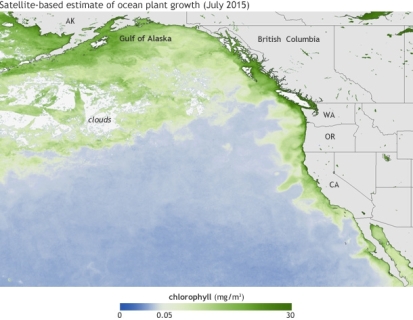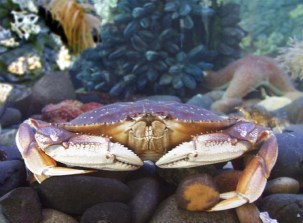
By now, you’ve heard of harmful algal blooms wreaking havoc along the California Current system. But what are these algal blooms actually doing that is so harmful? Phytoplankton bloom in most coastal waters in the spring—it’s a natural occurrence, a response to ideal conditions for their growth. Algal blooms themselves are not inherently harmful. The reason we’re looking for a particular type of phytoplankton, the genus Pseudo-nitzschia, is that some blooms of this group are very harmful. As Dr. Vera Trainer mentioned in her post, certain Pseudo-nitzschia species can produce a compound called domoic acid. Domoic acid is harmful because it’s a neurotoxin, which means it affects your brain. In mammals, it prevents neurons from firing correctly and can cause a part of the mammal brain called the hippocampus to die. Because this part of your brain is responsible for spatial orientation and memory, if a human consumes too much of the toxin, they can exhibit symptoms of what we call amnesic shellfish poisoning, including short-term memory loss and nausea. How do you get all of that domoic acid into you? By eating the shellfish that have consumed the toxic phytoplankton in the first place.


You may have noticed giant fisheries closures along the West Coast of the US last fall—we couldn’t harvest Dungeness crab, rock crab, or razor clams, all huge staples of the west coast fisheries. They were closed for your protection, because those species (and many more!) had been impacted by the largest Pacific harmful algal bloom on record. The shutdown, while absolutely necessary and vital to the health of consumers, caused millions of dollars of losses in the fishing industry and meant that any crab that was eaten on the West Coast was more likely than not shipped across the country—not exactly the most eco-friendly way to get your crab feed together.

Additionally, toxic Pseudo-nitzschia blooms can have a strong impact on marine mammals. Animals like gray whales, humpback whales, and California sea lions can consume so many domoic acid-contaminated fish that they develop domoic acid toxicosis. Because of the brain damage that results, these animals first lose their spatial orientation. For whales, and even seabirds, this can mean being unable to follow their migration routes, and thus not reaching their feeding or breeding grounds in time. For California sea lions, it can mean wandering up rivers or into towns and cities where they’re very vulnerable. If sea lions consume enough domoic acid, they can have intense seizures that lead to death.

So as we mentioned before, we’re looking for the conditions in which these Pseudo-nitzschia can reproduce rapidly and become more toxic. The UW and NOAA are also working jointly to begin to monitor these blooms remotely. The research coming out of this research expedition and the remote monitoring project are part of a cooperative effort to understand how the changing chemistry of our oceans affects marine life. Understanding how these changes could affect the dynamics of Pseudo-nitzschia blooms will give us an idea of how both our fisheries and marine mammals could be affected in the coming years in a high-CO2 world. So next time you have to import crab for your crab feed, or you see an article about a flippered friend in the wrong place, take a minute to think: how does my way of life impact our world and the marine life we would like to protect?
Author: Spencer Showalter


I didn’t realize the effect that algal blooms had on the sea life. Very informative post, thank you for sharing!
LikeLiked by 1 person